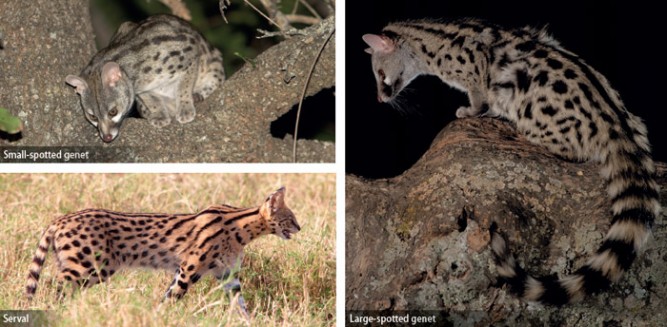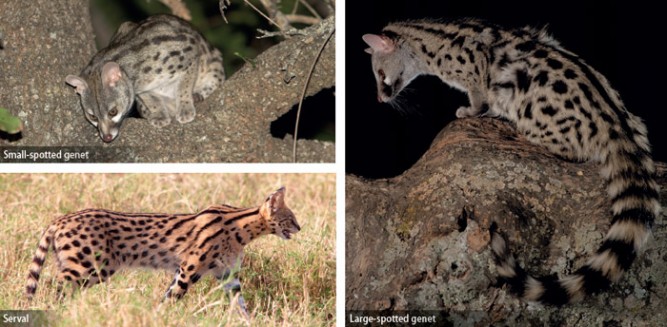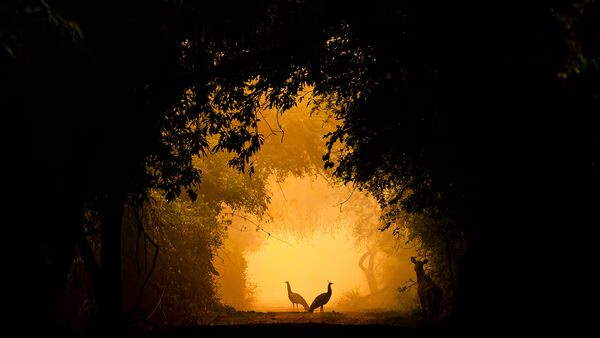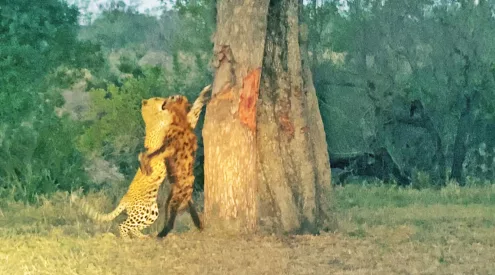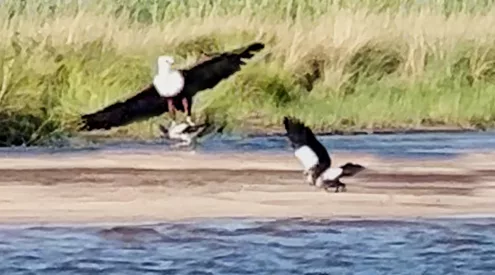I was enjoying the cool night air at Kruger National Park’s Mopani Rest Camp. Far away, I heard a hippo grunt, then a jackal call. But I was mesmerised by the small, slender creature in the branches of an acacia next to my hut. Obviously spoilt by visitors, the small-spotted genet had no interest in going deep into the African bush to look for rodents or insects to fill his stomach. I could swear he was licking his lips when my chops finally came off the fire.
But, let me not launch into the irresponsibility of feeding wild animals. I’d rather tell you about the small cats we don’t often see. The first of these is the genet, like the little guy at my hut. It’s technically incorrect to call them cats because, while they resemble felines and move like them, they’re more closely related to mongooses.
Two South African species are the small-spotted (Genetta genetta) and large-spotted (Genetta tigrina) genets. They both have slender bodies, long tails, short legs and long, rounded ears, but you can ‘spot’ the difference by looking at their spots, chins and tails (the small-spotted genet has smaller dark spots, a dark chin and a white-tipped tail, while the large-spotted has a pale chin and black-tipped tail). Much of their foraging is done on the ground, but they’re also excellent climbers.
As if telling the difference between the species wasn’t hard enough, both genets could be confused with civets. Genets are much smaller, but have similar colouring and, like civets, they have strong musk glands used for territorial, sexual and social purposes. The two genet species occur together in some areas, but the small-spotted is much more adaptable; the largespotted prefers well-watered areas and dense vegetation.
Which brings me to another cat that hunts in swampy areas: the serval. Taller than the genets, it has a tawny, black-spotted coat and a short tail and is even more cat-like in appearance and behaviour (they’re classed as cats, Felis serval). The nocturnal serval is seldom seen, preferring to keep well hidden in tall grass or reed beds, but look carefully for a head raised above the grass as it listens for movement (they’re excellent hunters and can even locate prey moving underground or hook a fish out of water).
As much as they look like your cat at home – it even purrs like one when content – servals, civets and genets are still wild animals and will growl and spit if you get too close.
Source:
Field Guide to Mammals of Southern Africa by Chris and Tilde Stuart (Struik, 2001).
Johannesburg Zoo nocturnal tour
See these animals in the flesh on a nocturnal tour of Joburg Zoo. Find out more and book at www.jhbzoo.org.za.
